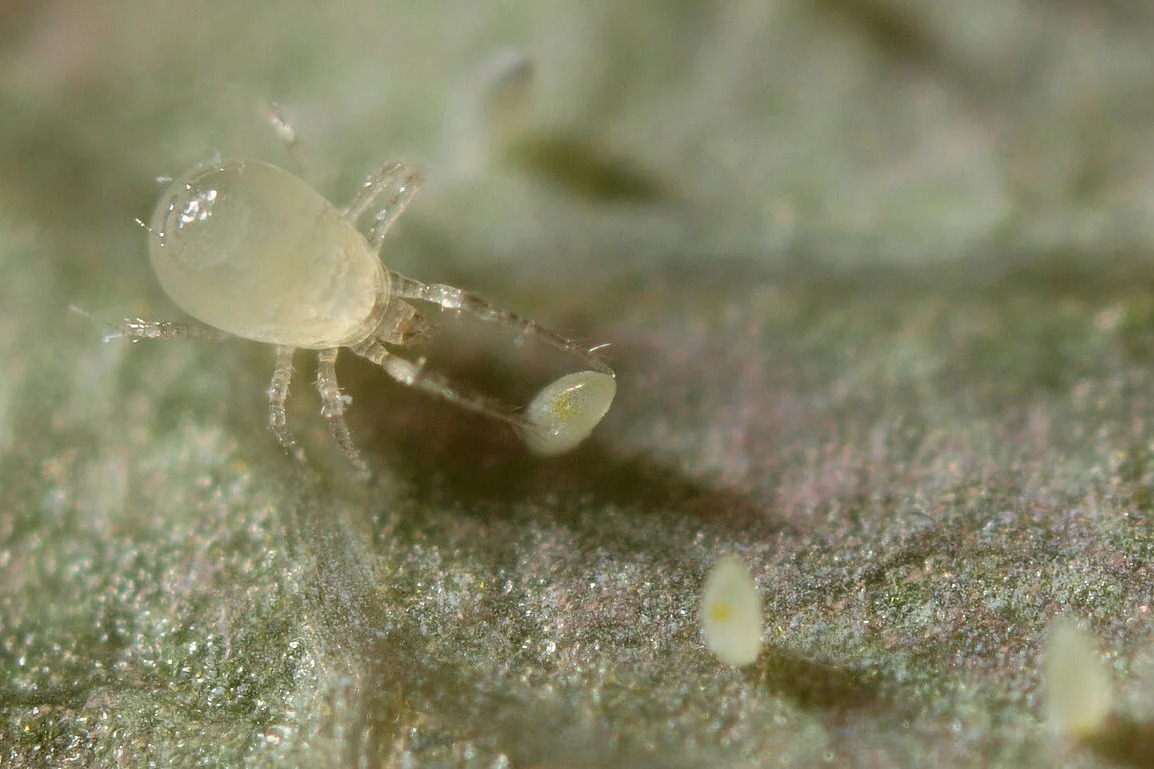
If you’ve been following along here for any length of time you know I love plants growing on other plants. Jungle cactus winding themselves around the branches of trees, pyrrosia that have completely covered a trunk so it seems to be enveloped in green scales—these things make me swoon. You’ve also probably been witness to my tucking tillandsia and other bromeliads (Fascicularia bicolor for example) into the hairy trunks of my palms—Trachycarpus fortunei and T. fortunei var. wagnerianus. Today I’m sharing my latest crazy project, ferns growing on palms…
Here are two of my palms, photo from last October. In fact all the pictures in this post are from October, 2024. The trunk of the palm on the far left is covered in Passiflora lutea, a decidulous vine that dies back over the winter and then grows to cover the palm over the summer. On the far right is the palm we’re looking at today. See the green bits? Those are ferns…
Growing up from the ground is Trachelospermum asiaticum ‘Theta’, an evergreen jasmine vine.
I love that vine, but I wasn’t content to wait for it to cover the trunk and decided to experiment using these natural sort of pockets in the furry trunk…
I started with the Asplenium trichomanes you saw in the top photo, and was so excited I texted a friend to share what I’d done. She encouraged me to take it one step further and include a Pyrrosia lingua. Duh! Of course I should…
I’m not sure why I needed the nudge, I mean I’d thought about it… I guess I was just hesitant to do it in October, with winter on the way (Asplenium trichomanes is hardy to Zone 3, whereas the pyrrosia is a Zone 8 plant). She reminded me though, when dry pyrrosia a better able to withstand cool temps.
So there you have it. Ferns on a palm…fun! You know I’ll keep you updated on how they perform, so far they’re doing great.
Now to those promised videos, first we’ve got a walk around the back garden that runs just over 4 minutes. As I say in my commentary, the date was September 11th, 2024.
This second video starts in the driveway and then I wander out to the front garden, it runs just over 5 minutes. I hope these add a new dimension to the the photo tours I shared earlier in the week—oh, and yes that sound you hear are my flip-flops!
To receive alerts of new
danger garden posts by email,
subscribe here. Please note: these are sent from a third party, their annoying ads are beyond my control.
All material © 2009-2025 by Loree L Bohl. Unauthorized reproduction prohibited and just plain rude.

